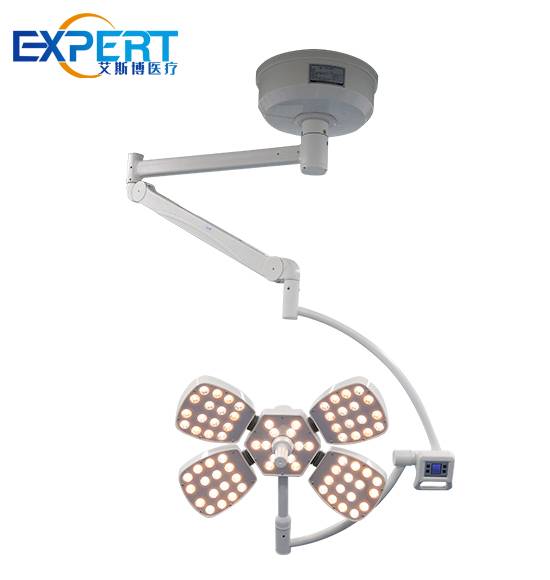Dirección
304 North Cardinal St.
Dorchester Center, MA 02124
Horas laborales
Lunes a viernes: 7:00 a. M. - 7:00 p. M.
Fin de semana: 10 a. M. - 5 p. M.
Lighting plays a crucial role in the success of surgical procedures. Hospital operating room lights must provide optimal illumination to ensure precision and safety during operations. Two of the most commonly used types of operating room lights are LED and halogen lights. In this comprehensive comparison, we will delve into the key differences between LED and halogen hospital operating room lights, examining their benefits, drawbacks, and applications. By understanding these differences, healthcare facilities can make informed decisions about the best lighting solutions for their surgical environments.

Proper lighting in hospital operating rooms is essential for several reasons. It ensures that surgeons and medical staff have a clear view of the surgical site, reduces eye strain, and helps prevent errors. Additionally, high-quality lighting can enhance the overall efficiency and safety of surgical procedures.
The two main types of hospital operating room lights are LED (Light Emitting Diode) and halogen lights. Each type has its unique set of characteristics, which we will explore in detail in the following sections.
LED lights have gained popularity in recent years due to their energy efficiency, longevity, and superior lighting quality. Some of the key features of LED hospital operating room lights include:
The benefits of using LED hospital operating room lights are numerous:
Despite their advantages, LED lights also have some drawbacks:









Halogen lights have been used in hospital operating rooms for many years. They are known for their bright, consistent light and relatively low initial cost. Key features of halogen hospital operating room lights include:
Halogen lights offer several benefits for hospital operating rooms:
However, halogen lights also have some disadvantages:

One of the most significant differences between LED and halogen hospital operating room lights is their energy efficiency. LED lights consume significantly less energy, resulting in lower electricity bills. Although the initial cost of LED lights is higher, the long-term savings in energy and maintenance make them a cost-effective choice. In contrast, halogen lights have a lower initial cost but higher operational expenses due to their energy consumption and shorter lifespan.
Both LED and halogen lights provide bright, clear illumination suitable for surgical procedures. However, LEDs offer the added advantage of adjustable color temperature, allowing surgeons to customize the lighting to their preferences. This feature can enhance visual clarity and precision during operations. Halogen lights, while providing consistent illumination, do not offer this level of customization.
Heat generation is another crucial factor to consider. LED lights emit significantly less heat compared to halogen lights. This not only improves comfort for medical staff but also reduces the need for additional cooling systems in the operating room. Halogen lights, on the other hand, can increase the ambient temperature, potentially impacting the working environment.
LED lights have a much longer lifespan than halogen bulbs, reducing the frequency of replacements and associated maintenance costs. This longevity makes LEDs a practical choice for busy surgical environments where minimizing downtime is essential. Halogen lights, with their shorter lifespan, require more frequent replacements, which can be a disadvantage in terms of maintenance.
| Característica | Luces LED | Luces halógenas |
|---|---|---|
| Costo inicial | Más alto | Más bajo |
| Eficiencia energética | Alto | Bajo |
| Esperanza de vida | Largo | Corto |
| Generación de calor | Bajo | Alto |
| Ajuste de la temperatura del color | Sí | No |
| Maintenance Costs | Bajo | Alto |
| Calidad de la iluminación | Bright and adjustable | Bright and consistent |
Both LED and halogen luces de quirófano de hospital have their unique advantages and disadvantages. LED lights are highly energy-efficient, have a longer lifespan, and offer adjustable color temperature, making them a versatile and cost-effective choice for modern surgical environments. Halogen lights, while offering consistent and reliable illumination at a lower initial cost, consume more energy and generate more heat, leading to higher operational costs and maintenance.
When choosing between LED and halogen lights for hospital operating rooms, healthcare facilities should consider factors such as budget, energy consumption, maintenance requirements, and the specific needs of their surgical environments. By making an informed decision, hospitals can ensure optimal lighting conditions that enhance surgical precision, safety, and overall efficiency.
LED hospital operating room lights offer several advantages, including high energy efficiency, a longer lifespan, adjustable color temperature, and lower heat generation. These features make them a cost-effective and versatile choice for modern surgical environments.
Yes, halogen hospital operating room lights are still relevant and widely used. They provide bright and consistent illumination at a lower initial cost. However, they consume more energy and generate more heat compared to LED lights, leading to higher operational costs and maintenance.
LED lights generate significantly less heat compared to halogen lights. This can improve the comfort of medical staff and reduce the need for additional cooling systems in the operating room. Halogen lights, on the other hand, can increase the ambient temperature, potentially impacting the working environment.
Yes, many LED hospital operating room lights offer adjustable color temperature, allowing surgeons to customize the lighting to their preferences and the specific requirements of the procedure. Halogen lights typically do not offer this level of customization.
LED hospital operating room lights have a much longer lifespan compared to halogen lights. This reduces the frequency of replacements and associated maintenance costs, making LEDs a practical choice for busy surgical environments where minimizing downtime is essential.
